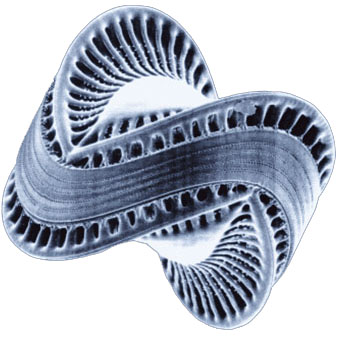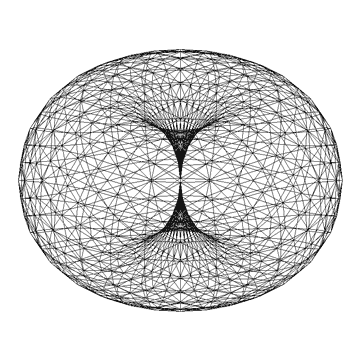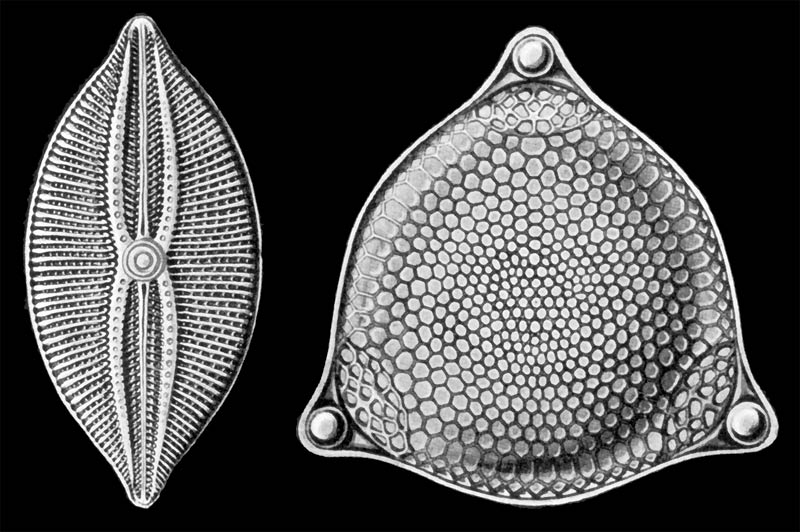Radiolarian Time. A series of hand-made LED sculptures referencing time, space and light.
This project is an exploration of electricity, space and light, its forms guided not by imitating nature's designs, but rather the way in which nature designs. It is unbound by our definitions of species, living versus non-living, or any other human-created genre and thus yields forms that are largely free from figurative artistic association. The sculptures not only resemble protists like Radiolarians and Diatoms but also stellar phenomena like wormholes and three-dimensional tori.
Made with thousands of tiny Light Emitting Diodes (LEDs), these light sculptures are twisted and curved to form tubular three-dimensional structures. Each sculpture starts as a flat mesh which is then rolled and attached to itself, creating a volume. Electricity runs throughout its entire form with parallel regions of positive and negative electrical potential supplying the LED bulbs with low voltage electricity (3 volts DC). The two regions are insulated from one another by air, meaning that the form cannot have any sharp folds or creases that could cause the two regions to touch. While the resulting electrical circuit is not the most efficient from a purely electrical standpoint, it is the most efficient when also incorporating space and material. These requirements, along with the prohibition of hard edges and folds, result in a similarity to bio-chemical and stellar forms for good reason: they arise from similar systems of geometry.
The toroid animation below shows how a series of straight lines can be arranged and manipulated to make an enclosed, curving structure. Its flexing and revolving form is similar to the Organic Electric system's stretchy wire structures. Other images show the geometric exoskeletons of protists.

|

|
|
A Diatom under an electron microscope src: CNRS |
Toroid src: Goodshare |
 |
|
|
Basket 2011 more: photos |
|
|
"Radiolarians (also Radiolaria) are amoeboid protozoa (diameter 0.1-0.2 mm) that produce intricate mineral skeletons, typically with a central capsule dividing the cell into inner and outer portions, called endoplasm and ectoplasm. They are found as zooplankton throughout the ocean, and their skeletal remains cover large portions of the ocean bottom as radiolarian ooze." - Wikipedia 
|
|
|
A Diatom drawing by Haeckel, showing pennate and centric frustules src: Wikipedia |
|
.jpg)
.jpg)
.jpg)
.jpg)
.jpg)
.jpg)